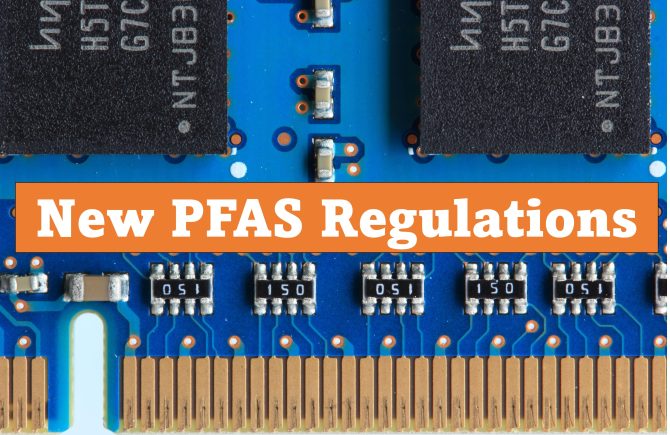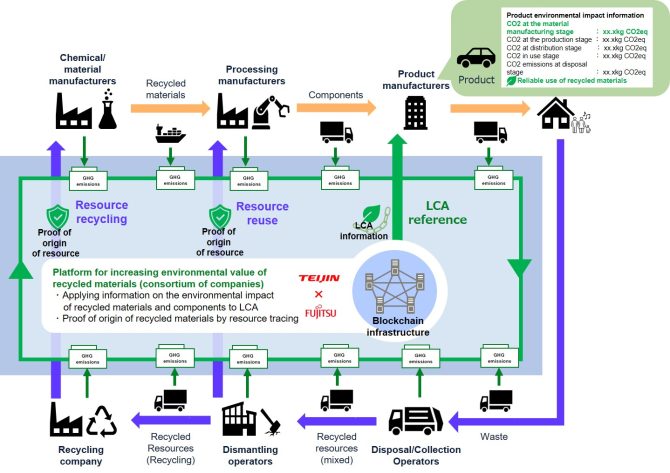
New rules for PFAS chemicals in Canada & U.S.
By Gloria Anastasopoulos, project manager, Enviropass Expertise Inc.
Electronics Regulations & Standards Engineering Environmental Supply Chain environmental regualtionsTHINK GREEN
Alarmed by recent studies on PFAS toxicity, several U.S. States have implemented laws restricting the sale of articles containing substances from the chemical group. In addition, the United States has proposed new rules in its Toxic Substances Control Act (TSCA).
Furthermore, the government of Canada is proposing to repeal the Prohibition of Certain Toxic Substances Regulations, 2012 and replace it with a stricter set of laws.

Source: Enviropass
What are PFAS?
PFAS stands for perfluoroalkyl and polyfluoroalkyl substances. Namely, they are a group of synthetic chemicals which contain a chain of bonded carbon and fluorine atoms. Generally, PFAS are desirable for their heat resistance, corrosion resistance, and ability to repel oil and water.
Most notably they are in: electronics; along with plastics; non-stick cookware; fire-fighting foams; water-proof clothing; treated wood; and many more. PFAS are restricted because they are persistent, bio-accumulative, and toxic (PBT). Specifically, they damage the liver, immune system, and endocrine function.
PFAS restrictions in U.S.A.
Significantly, several U.S. states have recently implemented restrictions on the distribution or sale of products containing PFAS. Below is an outline of the new regulations regarding electronics:
Maine: Manufacturers must report the presence of PFAS in their products by January 1st, 2023. Also, Maine prohibits the sale of any product containing PFAS as of January 1st, 2030.
California: Products cannot be labelled as “recyclable” if they intentionally contain PFAS in the article or packaging for a functional reason or above 100ppm.
Vermont: Manufacturers or importers must report information on the use of PFAS chemicals perfluorohexane sulfonic acid, perfluoroheptanoic acid, or perfluorononanoic acid in children’s toys sold in Vermont.
TSCA PFAS test orders
Moreover, the US Environmental Protection Agency (EPA) has added rules to TSCA, targeting companies that utilize PFAS chemicals in their products.
Firstly, EPA may oblige manufacturers to gather information on chemicals they use in their products if the substance:
Poses an unreasonable safety risk: Causes significant exposure to humans or the environment. If a manufacturer does not respond to a test Order or otherwise comply with TSCA requirements, it will be liable for penalties in the United States.

Source: Enviropass
Manufacturers may respond to the Order by: Developing the information through tests; Submitting existing facts EPA may not have considered; Requesting an exemption; Claiming not to be subject to the Order; Ceasing the manufacturing or processing of the chemical.
TSCA PFAS recording rule
Secondly, on June 28th, 2021, EPA proposed a rule to require manufacturers to report information on any PFAS they have synthesized since 2011.
The Small Business Advocacy Review (SBAR) Panel convened on April 6th, 2022, to discuss the proposed rule on behalf of small businesses. EPA may give the final rule by the end of this year.
TSCA PFAS significant new use rule
Lastly, on September 25th, 2020, the EPA implemented its significant new use rule (SNUR) on long-chain perfluoroalkyl carboxylate (LCPFAC) and perfluoroalkyl sulfonate chemical substances, as part of the PFAS substances family.
In short, the rule requires anyone manufacturing, processing, or importing the chemicals for a new use to notify the EPA at least 90 days in advance. Additionally, manufacturing may not begin until EPA has reviewed the notice.
New Canada PFAS regulations
Last May, the Canadian government proposed the Prohibition of Certain Toxic Substances Regulations, 2022 to replace the regulations implemented in 2012. In particular, the new rules would introduce additional restrictions on the use, import, manufacture, and sale of PFOS, PFOA, and LCPFCA, which are PFAS chemicals. The Canadian Environmental Protection Act, 1999 (CEPA) has declared these substances toxic.
New Canada PFAS regulations exemptions
Notably, certain exemptions apply to the new regulations, such as the ongoing use and sale of Electrical and Electronic Equipment (EEE).
However, the proposed regulations would also repeal many exemptions effective in its 2012 counterpart, including the sale and import of:
- PFOS in photographic films, paper, and printing plates;
- PFOA and LCPFCA for personal use;
- PFOA and LCPFCA in manufactured items (some exemptions still apply);
- PFOA and LCPFCA manufactured before December 23rd, 2016.
Other Regulations Concerning PFAS
Globally, several regulations target the use of PFAS in articles. For example:
California Proposition 65;
European Union (EU) REACH Regulation on Substances of Very high Concern (SVHC);
EU Regulation on Persistent Organic Pollutants (EU POP).
How Can Manufacturers Ensure they Comply with PFAS Regulations?
Keeping track of, and following so many environmental regulations can seem daunting. Manufacturers can do their due diligence to maintain compliance by:
- Staying informed on current and upcoming laws;
- Performing an audit of activities, services, and products;
- Conducting a material risk assessment;
- Testing medium to high-risk components;
- Educating supply chains.
- Ultimately, employing skilled experts to manage these tasks can make environmental compliance straightforward.
__________________
